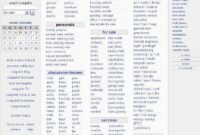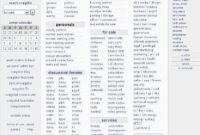Used Chevy 2500 Pickup Trucks For Sale: Your Ultimate Buyer’s Guide pickup.truckstrend.com
The Chevrolet Silverado 2500HD is synonymous with robust capability, unwavering reliability, and the sheer power needed to tackle the toughest jobs. For countless individuals, from contractors and farmers to avid RV enthusiasts, a new 2500HD might be out of budget, but a used model offers an exceptional opportunity to acquire a true workhorse without breaking the bank. Diving into the used market for a Chevy 2500 can be a smart financial decision, providing significant savings while still delivering the heavy-duty performance you demand.
This comprehensive guide is designed to navigate the complexities of purchasing a used Chevy 2500 pickup truck. We’ll explore why these trucks hold their value, what to look for across different generations, crucial inspection points, the eternal gas vs. diesel debate, and practical advice to ensure you drive away with the right truck for your needs.
Used Chevy 2500 Pickup Trucks For Sale: Your Ultimate Buyer’s Guide
Why Choose a Used Chevy 2500? The Enduring Appeal of a Workhorse
The appeal of a used Chevy 2500 extends far beyond its initial cost savings. These trucks are engineered for longevity and hard work, making them an excellent long-term investment for those who need serious utility.
- Unmatched Durability and Reliability: Built on a heavy-duty chassis, the 2500HD is designed to withstand rigorous use. Components are generally over-engineered, contributing to their reputation for lasting hundreds of thousands of miles with proper maintenance.
- Superior Towing and Hauling Capacity: This is where the 2500HD truly shines. With impressive Gross Vehicle Weight Ratings (GVWR) and towing capacities often exceeding 15,000 pounds (depending on configuration and year), they are ideal for pulling large trailers, fifth-wheel campers, and substantial payloads.
- Powerful Engine Options: Whether you opt for the venerable gasoline V8 or the legendary Duramax diesel, you’re getting a powerplant capable of handling demanding tasks with ease.
- Aftermarket Support and Parts Availability: As one of the best-selling heavy-duty trucks, the Chevy 2500 benefits from a massive aftermarket. Parts are readily available, and a vast community of owners and mechanics can offer support and advice.
- Value Retention: While new trucks depreciate quickly, the robust nature and high demand for used heavy-duty trucks like the 2500 mean they tend to hold their value remarkably well, especially well-maintained diesel variants.

Generations of Power: Understanding the Evolution of the Chevy 2500
Chevrolet has continuously refined the 2500HD, introducing new technologies, engines, and comfort features across its generations. Understanding these key eras can help you narrow down your search based on budget and desired capabilities.
- GMT800 (1999-2007 Classic): These models laid the groundwork for modern HD trucks. Common engines include the 6.0L Vortec gasoline V8 and the early 6.6L Duramax LB7, LLY, and LBZ diesels. Known for their robust simplicity and capability, though interiors are more basic and technology limited compared to newer models.
- GMT900 (2007.5-2014): A significant redesign brought updated styling, improved interiors, and enhanced frame rigidity. Engine options continued with the 6.0L Vortec and the Duramax LMM and LML diesels. These years saw improvements in towing technology and cabin refinement.
- K2XX (2015-2019): Another comprehensive redesign with a more modern aesthetic, quieter cabins, and further technological advancements. The 6.0L Vortec and 6.6L Duramax LML remained the primary powertrains. Enhanced trailering cameras and safety features began to appear.
- T1XX (2020-Present): The latest generation boasts even more aggressive styling, significantly increased towing capacities, and the new 6.6L L8T gasoline V8 alongside the updated 6.6L Duramax L5P. These are the most technologically advanced and capable 2500s, but also the most expensive on the used market.

What to Look For: A Comprehensive Pre-Purchase Checklist

Buying a used heavy-duty truck requires meticulous inspection. Don’t rush the process, and consider having a qualified mechanic perform a pre-purchase inspection (PPI).
- Mechanical Inspection:
- Engine: Check for leaks (oil, coolant, fuel), unusual noises (knocks, ticks, squeals), excessive smoke from the exhaust (especially diesels). Verify fluid levels and condition.
- Transmission: Ensure smooth, timely shifts without hesitation or slipping. Check transmission fluid color and smell (burnt smell is bad). Test all gears, including reverse.
- Brakes: Look for even pad wear, pulsating pedal, or grinding noises. Check fluid level.
- Suspension: Listen for squeaks or clunks over bumps. Check for sagging or uneven ride height. Inspect shocks, springs, and bushings for wear or damage.
- Tires: Check tread depth and even wear. Uneven wear can indicate alignment or suspension issues.
- 4×4 System (if applicable): Test engagement in both 4-High and 4-Low. Listen for grinding or clunking.
- Frame: Critically inspect the frame for rust, especially around welds and mounting points. Look for bends, cracks, or repairs that might indicate accident damage.
- Exterior and Interior Condition:
- Body Panels: Look for dents, scratches, misaligned panels, or paint discrepancies that suggest accident repairs.
- Rust: Beyond the frame, check wheel wells, rocker panels, bed corners, and door bottoms.
- Interior: Check upholstery for rips, tears, or excessive wear. Test all electronic components: windows, locks, HVAC (AC/heat), infotainment system, lights, and gauges.
- Maintenance Records: This is paramount. A well-documented service history indicates a diligent owner and predictable maintenance needs. Look for regular oil changes, transmission services, and specific diesel maintenance (fuel filter changes, DPF cleaning/regeneration cycles).
- VIN Check: Run a comprehensive VIN check through services like CarFax or AutoCheck. This can reveal accident history, salvage titles, flood damage, odometer rollbacks, and open recalls.
- Test Drive: Drive the truck on various road conditions (city, highway, bumps). Pay attention to steering feel, braking performance, acceleration, and any unusual noises or vibrations. Test the towing/haul mode if possible.
Engine Deep Dive: Gas vs. Duramax Diesel
The choice between a gasoline V8 and a Duramax diesel is one of the most critical decisions when buying a used 2500HD. Each has distinct advantages and considerations.
-
Gasoline V8 (e.g., 6.0L Vortec, 6.6L L8T):
- Pros: Lower upfront purchase cost, simpler and generally less expensive maintenance, quicker warm-up times in cold weather, often quieter operation. Excellent for lighter towing, daily driving, or occasional heavy loads.
- Cons: Lower torque output compared to diesel, which can mean more effort when pulling very heavy loads. Higher fuel consumption, especially under load.
- Common Considerations: Early 6.0L engines are known for their longevity. The newer 6.6L L8T offers significantly more power.
-
Duramax Diesel (e.g., 6.6L LBZ, LML, L5P):
- Pros: Superior towing and hauling capability due to massive torque, better fuel economy (especially when towing), exceptional longevity when properly maintained. Ideal for frequent heavy towing, long-distance hauling, or commercial applications.
- Cons: Higher upfront purchase cost, more complex and expensive maintenance (e.g., fuel filter changes, Diesel Particulate Filter (DPF) and Exhaust Gas Recirculation (EGR) systems), potential for costly repairs if not maintained. Slower warm-up in cold weather.
- Common Considerations: Earlier Duramax engines (LB7, LLY) had known injector issues. Later models (LML, L5P) feature sophisticated emissions systems that require proper regeneration cycles and maintenance. Ensure any DPF/EGR issues have been addressed or consider the implications of these systems if you live in an emissions-regulated area.
Trim Levels and Features: Finding Your Perfect Match
Chevy 2500s come in various trim levels, from basic work trucks to luxurious cruisers, each offering different features and amenities.
- Work Truck (WT): Basic vinyl or cloth interior, minimal tech, designed for pure utility. Best for those needing a no-frills workhorse.
- LT: Adds power windows/locks, upgraded cloth interior, more infotainment options, and often chrome accents. A good balance of utility and comfort.
- LTZ: Upscale features like leather seats, advanced infotainment, dual-zone climate control, power-adjustable seats, and more exterior chrome.
- High Country (Newer Models): The top-tier luxury trim with premium leather, unique styling, advanced safety features, and all available tech.
Consider cab configurations (Regular Cab, Extended Cab, Crew Cab) and bed lengths (Standard, Long Box) based on your passenger and cargo needs. Look for crucial towing features like integrated trailer brake controllers, heavy-duty trailering packages, and auxiliary transmission coolers.
Where to Buy: Navigating the Market for Used 2500s
The used truck market offers several avenues for purchase, each with its own pros and cons.
- Dealerships: Offer a wider selection, financing options, and sometimes certified pre-owned (CPO) programs with warranties. Prices may be higher, but there’s often more accountability.
- Private Sellers: Can offer better deals as there’s no dealer markup. However, it requires more due diligence from the buyer, including arranging inspections and handling paperwork.
- Online Marketplaces: Websites like Autotrader, Cars.com, CarGurus, Facebook Marketplace, and Craigslist provide extensive listings. Be wary of scams and always verify the seller and vehicle.
- Auctions: Can yield excellent deals but are high-risk. Vehicles are typically sold "as-is," and thorough inspections before bidding are often limited. Best for experienced buyers.
Negotiating and Financing: Securing the Best Deal
- Research Market Value: Use online tools (Kelley Blue Book, NADA Guides, Edmunds) to determine fair market value based on year, mileage, trim, and condition.
- Be Prepared to Walk Away: This is your strongest negotiating tool.
- Factor in Potential Repairs: Even a well-maintained used truck might need some work. Budget for immediate and future maintenance.
- Pre-Approved Loans: Secure financing from your bank or credit union before visiting a seller. This gives you leverage and a clear budget.
- Don’t Forget Sales Tax and Fees: Factor these into your total cost.
Common Challenges and Solutions
- Rust: A perennial issue, especially in colder climates. Inspect thoroughly. Surface rust can be treated, but frame rust is a major concern.
- High Mileage: Don’t automatically dismiss high-mileage trucks. A 200,000-mile diesel with excellent maintenance records can be a better buy than a 100,000-mile truck with no history.
- DPF/EGR Issues (Diesel): These emissions systems can be costly to repair if they fail. Regular highway driving helps them regenerate.
- Cost of Parts and Maintenance: Heavy-duty truck parts and labor are generally more expensive than for passenger cars. Factor this into your budget.
Used Chevy 2500 Price Guide
The price of a used Chevy 2500 varies significantly based on generation, engine, trim, mileage, condition, and region. The table below provides estimated ranges to give you a starting point.
| Generation / Year Range | Engine Type (Primary) | Condition (Good) | Condition (Excellent) | Key Features / Notes |
|---|---|---|---|---|
| GMT800 (1999-2007 Classic) | 6.0L Gas / 6.6L Diesel | $8,000 – $18,000 | $15,000 – $25,000 | Basic interiors, reliable workhorses. Early diesels (LB7/LLY) may have injector issues. LBZ diesel highly sought after. High mileage common. |
| GMT900 (2007.5-2014) | 6.0L Gas / 6.6L Diesel | $15,000 – $28,000 | $22,000 – $35,000 | Updated styling, improved interiors. Duramax LML models introduced sophisticated emissions systems. Good balance of modern features and value. |
| K2XX (2015-2019) | 6.0L Gas / 6.6L Diesel | $25,000 – $40,000 | $35,000 – $55,000 | More refined cabin, enhanced safety features, quieter ride. Stronger LML Duramax. Still a popular choice for value and capability. |
| T1XX (2020-Present) | 6.6L Gas / 6.6L Diesel | $45,000 – $65,000+ | $55,000 – $80,000+ | Latest technology, massive towing increases, new 6.6L Gas engine, L5P Duramax. Closest to a new truck experience but with significant savings. |
Note: These are broad estimates. Actual prices will vary based on specific trim level, 2WD/4WD, cab/bed configuration, exact mileage, maintenance history, and local market conditions.
Frequently Asked Questions (FAQ)
Q1: What is the "best" year for a used Chevy 2500?
A1: There’s no single "best" year, as it depends on your budget and needs. Many consider the 2006-2007 LBZ Duramax models (GMT800) highly reliable due to their power and pre-DPF emissions. For a more modern truck, 2015-2019 (K2XX) models offer a great blend of capability, comfort, and value.
Q2: How many miles are too many on a used Chevy 2500?
A2: For a well-maintained gasoline 2500, 150,000-200,000 miles is common. For a Duramax diesel, 250,000-300,000 miles is not uncommon, and many go much further. The key is consistent maintenance records, not just the odometer reading.
Q3: Is the Duramax diesel worth the extra cost?
A3: If you regularly tow heavy loads (over 10,000 lbs), tow long distances, or need superior fuel economy under load, the Duramax is often worth the higher initial cost and maintenance. For occasional light towing or daily driving, a gasoline V8 is usually more economical.
Q4: What should I budget for maintenance on a used 2500?
A4: Budget more than for a passenger car. General maintenance for a gas 2500 could be $1,000-$2,000 annually. For a diesel, expect $1,500-$3,000 annually, potentially more if emission system components fail. Larger tires, brakes, and specialized diesel services contribute to higher costs.
Q5: Can a Chevy 2500 pull a large RV or fifth wheel?
A5: Yes, a Chevy 2500HD is designed for this. Always check the specific year and configuration’s towing capacity (found in the owner’s manual or on the door jamb sticker) and ensure your RV’s loaded weight (GVWR) is within the truck’s limits, including tongue weight/pin weight.
Q6: What’s the main difference between a 2500HD and a 3500HD?
A6: The primary difference is payload and often maximum towing capacity. A 3500HD typically has a higher GVWR (allowing more cargo in the bed) and may have a stronger rear axle, often with a dual-rear-wheel (dually) option for maximum stability and towing.
Conclusion
Purchasing a used Chevy 2500 pickup truck can be an incredibly rewarding decision, offering a powerful, reliable, and capable vehicle at a fraction of the cost of a new one. By understanding the different generations, conducting thorough inspections, weighing the pros and cons of gas versus diesel, and knowing where to look, you can confidently navigate the market. Remember that patience and diligence are key to finding a well-maintained truck that will serve your heavy-duty needs for years to come. With the right approach, your used Chevy 2500 will not just be a purchase; it will be an investment in enduring capability.



